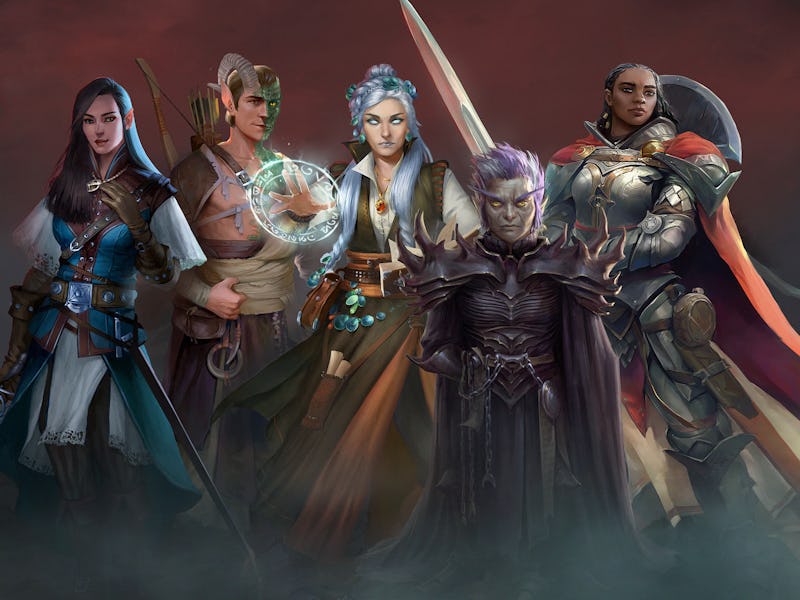Pathfinder: Wrath of the Righteous Captures the Number-Crunching Joy of TTRPGs
Roll the dice on a satisfyingly deep RPG.

Baldur’s Gate 3 may be the most popular video game based on a tabletop RPG out there, but it’s far from the only one. Dungeons & Dragons has been inspiring video game adaptations for decades, and more recently, one of its biggest competitors has gotten a few digital adaptations of its own. The most recent, Pathfinder: Wrath of the Righteous, is now on PlayStation Plus and it’s the perfect game for any Baldur’s Gate 3 fans who want a little more old-school complexity in their RPGs.
As you probably could have guessed, Wrath of the Righteous is built on the Pathfinder tabletop system. Pathfinder began life as a modified version of the Dungeons & Dragons 3.5 version rules, made possible by D&D’s old Open Game License, which allowed variants of its game to be legally published. Pathfinder was intended to fix what its designers saw as some of D&D 3.5’s problems, including by making its core classes more powerful and varied.
Pathfinder Wrath of the Righteous shines in combat, with two distinct battle modes to choose from.
Both Dungeons & Dragons and Pathfinder are supported by some pretty hefty rule books covering everything from the mechanics of character creation to dozens of learnable spells. Baldur’s Gate 3 does a great job of simplifying the player experience, making it easier to start playing without deep knowledge of exactly how its ruleset works. Pathfinder: Wrath of the Righteous takes a different approach.
It’s totally possible to dive in to Wrath of the Righteous without knowing a single thing about Pathfinder and have yourself a good old time. Just don’t expect it to be easy. From the first moments of the game as you’re building out your main character, Wrath of the Righteous throws an avalanche of rules and Pathfinder-specific terms at you. Because the game was designed to give players more varied class options than D&D, you’ll also get to choose from an enormous number of starting classes, with the ability to switch to more advanced options later on. Because of that, knowing how to build your character can be a daunting challenge on its own, especially if you’re working toward a specific advanced class later on.
The payoff for all that hard work is — just like Pathfinder was originally intended to do — Wrath of the Righteous feels wildly unrestricted in how it lets you evolve your character. Combat, too, is governed by far more complicated rules than the ones Baldur’s Gate 3 shows to the player. While that can be daunting to deal with, it also lets you find niches and specialties that can turn you into a walking god if you know how to use them correctly.
Building a character to fight armies of demons is complex and satisfying.
What’s more, Wrath of the Righteous in many ways feels like several games in one. On top of its epic RPG story, full of epic battles and fantastical plotlines as you’d expect, there’s also an army management layer, where you lead a much larger force in defending the realm against demons. Like the rest of the game, it’s intimidatingly complex, and drew the most criticism of anything in Wrath of the Righteous upon release. Even if you agree with critics that it’s a drag (and it absolutely can be), the rest of the game more than makes up for it.
More impressively, the main campaign of Wrath of the Righteous also feels like two games at one, thanks to it having two distinct combat systems you can switch between at will. You can play through the entirety of Wrath of the Righteous as a turn-based game, just like Baldur’s Gate 3. Turn-based mode gives you all the time in the world to make decisions of But at any time, you can switch to a real-time with pause system literally with the push of a button. This mode feels much more like classic Baldur’s Gate or the more recent Pillars of Eternity, letting you make quick decisions on the fly and speed through battles much more quickly.
They’re no Shadowheart, but Wrath of the Righteous still has plenty of fun party members.
The one real downside to Wrath of the Righteous is that you shouldn’t come in expecting a story that reaches the intense, often steamy heights of Baldur’s Gate 3. Its narrative is much closer to standard fantasy fare, focusing on occult conspiracies and a battle with demon invaders. And while its companion characters have plenty of charm and share some delightful banter throughout the adventure, you’re not likely to fall for any of them as hard as you may have for Karlach or Astarion.
But when the rest of the game is this good, it’s hard to be too upset about that. Pathfinder: Wrath of the Righteous is the perfect game for anyone who wants a more authentic (read: complicated) tabletop experience, and even if that’s not you, you still may find a lot to love in its deep, satisfying RPG combat.